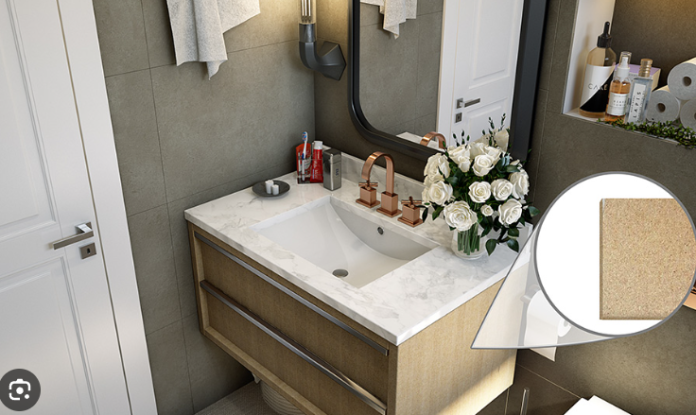Table of Contents
Introduction: Navigating the Maze of Choices
Embarking on a journey to renovate or furnish your bathroom can feel akin to wandering through an intricate maze. Among the plethora of decisions awaiting, one critical choice stands as a beacon: selecting the appropriate materials for your bathroom furniture. This comprehensive guide aims to be your torchlight in this endeavor, illuminating your path towards informed, sagacious decisions that harmoniously blend durability, aesthetics, and ease of maintenance. Imagine the transformative effect of walking into a bathroom adorned with the timeless elegance of Hansel Stone fixtures – a testament to the profound impact of choosing the right materials.
Wood: The Classic Charmer
Wood, a perennial favorite, infuses warmth and natural beauty into any bathroom setting. However, not all timbers are created equal. Teak and cedar, known for their inherent resistance to moisture and decay, make excellent choices for a humid environment. Other woods like oak and bamboo also offer durability, provided they are properly treated and sealed. Remember, wooden furniture demands regular maintenance and sealing to preserve its allure and prevent warping or rotting in the humid bathroom air.
Glass: The Contemporary Artist
Modern bathrooms frequently feature glass for its sleek, minimalist aesthetic. Tempered glass, in particular, offers enhanced strength and safety, making it an ideal choice for shower enclosures and vanity tops. Its transparent nature aids in creating a sense of spaciousness. Cleaning is straightforward, requiring simple wiping to maintain its pristine look, although water spots and fingerprints might necessitate frequent attention. Glass can be combined with other materials like metal or wood for a more eclectic look.
Metal: The Durable Maverick
Stainless steel and brass stand tall as the titans in the metal category. They resist rust and corrosion, bringing a distinct contemporary or industrial vibe to the bathroom. These materials are known for their long-lasting nature and can withstand the rigors of daily use. While robust, these materials can show water spots and fingerprints, similar to glass, and may require regular polishing to retain their shine.
Stone: Nature’s Masterpiece
Natural stones like marble, granite, and quartz bring a slice of nature’s artistry into your bathroom. Durable and resistant to scratches, stone offers a unique pattern and richness to every piece, ensuring no two installations are exactly alike. However, be wary of staining; these materials are porous and require regular sealing to maintain their pristine appearance. Stone can add significant value to your property, thanks to its luxurious appeal and longevity.
Laminate: The Practical Illusionist
Laminates offer the illusion of more expensive materials at a fraction of the cost. Ideal for budget-conscious renovators, they come in a variety of patterns and colors, mimicking wood, stone, or even metal. While offering decent durability and resistance to stains, laminates can succumb to moisture over time, especially if not properly installed or sealed. They are a practical solution for those looking to update their bathroom aesthetics without a hefty investment.
Acrylic: The Budget-Friendly Hero
Acrylic is the go-to material for cost-conscious renovators. Lightweight and available in a myriad of colors and finishes, it’s particularly favored for shower units and bathtubs. Its non-porous nature makes it highly resistant to moisture and mildew, ensuring easy maintenance. The downside? Acrylic, while durable, can scratch more easily than other materials, and its color may fade over time with exposure to direct sunlight.
Concrete: The Industrial Trendsetter
For those seeking an industrial or minimalist edge, concrete is a bold and unconventional choice. Its hefty, raw appearance makes a significant statement, lending a contemporary and unrefined aesthetic to the space. Be prepared, though; concrete is heavy, requiring strong support structures, and it can be prone to chips and cracks if not properly mixed or sealed. Despite these considerations, its unique look and ability to be molded into custom shapes make it a compelling choice for bespoke bathroom designs.
Conclusion: Your Personal Oasis Awaits
Your bathroom is not merely a functional space for daily routines; it’s a sanctuary for relaxation and rejuvenation. The materials you choose for your bathroom furniture play a pivotal role in setting the stage for this personal haven. From the rustic charm of wood to the sleek sophistication of Hansel Stone, each material offers a unique blend of aesthetics, durability, and maintenance requirements. Your decision will shape this intimate space for years to come, so choose with care and create a bathroom that mirrors your lifestyle, preferences, and tastes. Remember, the right materials can transform a simple bathroom into a luxurious retreat, a place where every moment is an experience in comfort and style.














